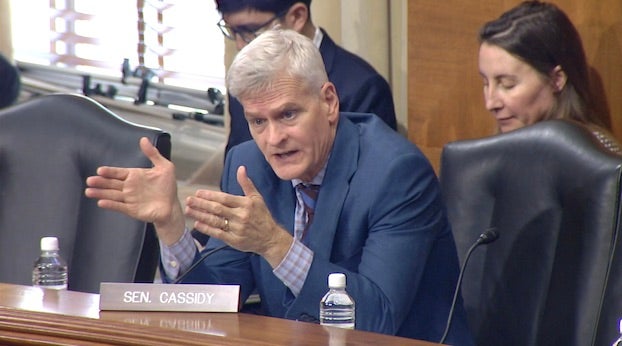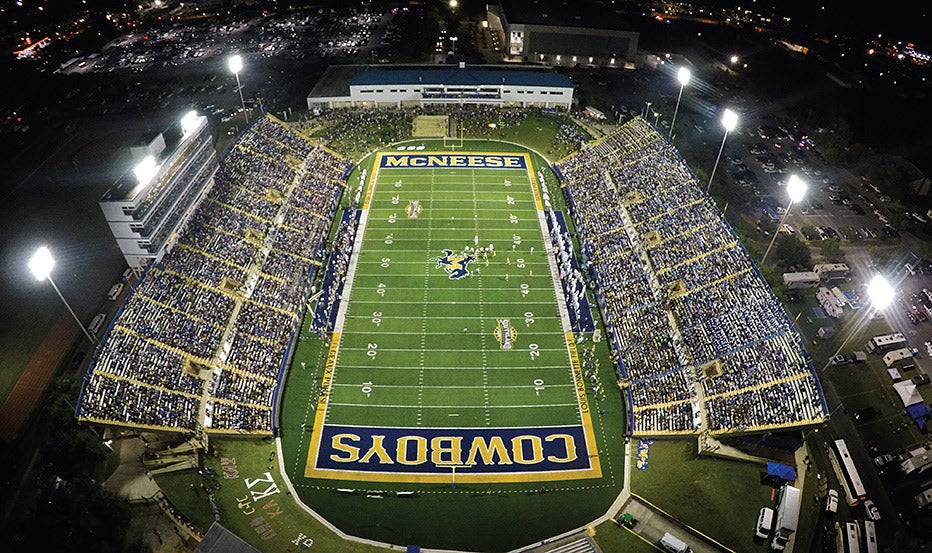1954 trip definitely different
Published 5:15 am Sunday, March 5, 2017
The five of us were headed to Ft. Benning, Ga., for summer camp in June of 1954 and had no idea we would witness events that were eerily similar to the illegal gambling that rocked Calcasieu Parish in the late 1940s and early 1950s. However, there was more.
Billy Frank Gossett, Ira Landry, Jack Salter, Robert Benoit and I were among 26 McNeese State College students attending the 1954 General Military Science ROTC summer camp. We had to drive through Phenix City, Ala., to get to Columbus, Ga., the home of Ft. Benning, and noticed what looked like U.S. Army troops stationed at all the city’s downtown sites.
We learned the next day they were actually members of the Alabama National Guard who were sent there by the governor after the killing of Albert L. Patterson, the man slated to become the state’s next attorney general. Patterson had vowed to fight crime in Phenix City, a city of 23,000 that one newspaper called “the most corrupt city in the nation until 1954.”
Trending
Howard Pennington, the president of the Russell (County) Betterment Association, blamed “The Crime Syndicate” for Patterson’s death. Pennington said Patterson had said he would probably be killed before he could take office on Jan. 17, 1955.
Just 24 hours before his death, Patterson told a church group, “I have only a 100-to-1 chance of ever being sworn in as attorney general.”
The Shelbyville Times-Gazette in a 2005 series reported that Patterson was bleeding to death on a downtown sidewalk after being shot three times with a .38 as he left his office around 9 p.m. on the night of June 18, 1954.
The Associated Press at that time said, “Crime in this southeast Alabama city across the Chattahooche River from Columbus, Ga., long has fattened on soldiers from nearby Ft. Benning.” It added that soldiers “came each night to lounge in the girlie bars and gamble away their pay.”
The manager of the Phenix City Chamber of Commerce resigned his post and said he was moving to another city.
“This has reached the point where I personally cannot endure it any longer. I’m through,” Alton V. Foster said.
Trending
The late Kenneth Dixon, former editor of the American Press, wrote about the Phenix City killing in his “Charley Lake says” column of June 22, 1954. Dixon was a key player in the anti-gambling fight in Calcasieu Parish waged successfully by this newspaper and a citizen’s organization called the Peoples Action Group (PAG).
Dixon, who had also been threatened by gambling interests, wrote that Patterson was threatened so many times he became accustomed to it. He said Patterson’s office was splashed with gasoline and set afire, but a janitor managed to put it out. The home of the Alabama Betterment Association’s president was dynamited, but no one was hurt.
Alabama Gov. Gordon Persons declared martial law in Phenix City in July of 1954 and the National Guard relieved law enforcement officials of their weapons and their duties. Parsons said those officials have either been “unable or unwilling” to control the crime.
The Times-Gazette said Guardsmen raided businesses, destroyed gambling equipment and made arrests, totally wiping out the vice syndicate. The newspaper said aside from civil unrest or natural disasters, it was the only time in U.S. history that martial law was declared in an American city since Reconstruction after the Civil War.
Three officials were eventually indicted for Patterson’s murder. They were Chief Deputy Sheriff Albert Fuller, believed by many to be the triggerman, county prosecuting attorney Archer Ferrell and state Attorney General Silas Garrett.
Fuller was found guilty and sentenced to life in prison. However, he was paroled a decade later and died in 1969. Ferrell was freed after a jury following a 17-day trial acquitted him of the murder charge. A newspaper report in 1957 said Garrett was in a Texas psychiatric hospital and was never brought to trial.
In 1957, The AP said, “After 22 years as a den of cutthroats, prostitutes and gamblers, Phenix City is as quiet and respectable as a prayer meeting.”
“The Phenix City Story,” an Allied Artists’ movie, was first shown at the Paramount Theater in Lake Charles on Oct. 23, 1955. Reviewers said it told the story of the responsible residents of Phenix City who “finally rose in anger and tossed out the gamblers, hoodlums and ladies of the evening who infested the community.”
The McNeese contingent of ROTC students at Ft. Benning that summer also made some history. It joined military students from Tuskegee University in the Alabama city of the same name in order to have enough men to make a full Army company. Our first major test of racial integration went extremely well during our stay.
Our trip home was fairly uneventful until we reached Krotz Springs after dropping Salter off in Covington. Gossett was driving his car and it was totaled when a vehicle headed in the opposite direction veered into our lane. Gossett took to the shoulder to avoid being hit, but the other driver’s car struck the rear of our car.
Gossett received a knee injury and Landry had lacerations and internal injuries. Benoit and I had only minor scratches. Gossett’s parents drove to Krotz Springs and took us home.
As you can see, our trip to Ft. Benning was one for the record books.
Jim Beam, the retired editor of the American Press, has covered people and politics for more than five decades. Contact him at 337-515-8871 or jbeam@americanpress.com.
PUBLIC CORRUPTION IN ALABAMA (MGNonline)





